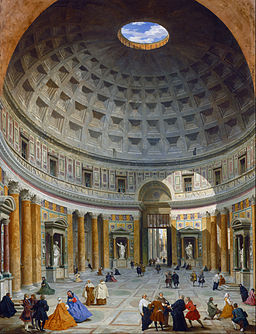I used to be a Classical archaeologist, excavating in Israel and studying ceramics in Rome for months at a time. I didn’t come to quilting until the end of my graduate school career, when I visited my grandparents the last spring break before I decided to leave the academic hamster wheel after 4 years. Well, really, 8-9 years if you count undergrad and summer work. But whatever, in those years I saw and learned a lot of things that informed my world view and understanding of the interconnectedness of history.
But how does this apply to quilting?
When I first started quilting, I was really struck by the 1:1 similarities of ancient Roman mosaics and quilt blocks. Flying Geese, economy blocks, square in square, medallions and more were present in both architectural decoration and quilts.
My hypothesis is that around the same time we start to see the rise of the American quilt in the late 18th and 19th centuries is around the same time that well-off and socially aspirational Americans began to more frequently make the Grand Tour, a months-long tour of Europe to see the important historical and social sites of the time. I would not be at all surprised if the mosaic floors of ancient sites such as Pompeii (by then under excavation for at least 50 years) and other sites in Rome and elsewhere were inspirational to the ladies. The families that made these trips often brought back art and books and other luxury items and memorabilia, and many of the fine art museums became beneficiaries of these trips. Also, studying Classical languages, art, and history was considered a critical component of the well-educated American at the time.
Side note: While the Grand Tour was often seen as a “finishing” of a young man’s education in the 17th and 18th century, we do know women made the trips as well, and Americans made the trip more frequently during the 18th and 19th centuries. A lengthy stop in Rome to study was always part of it.In my own quilts
An example of a quilt that is almost 1:1 of a Roman mosaic is my “Lovely Fishbourne” quilt from my book Wanderlust Quilts

Designed and pieced by me, quilted by my good friend Liz Haskell of Frolicking Threads. Hand dyed fabrics by Cherrywood Fabrics. Photo by Nissa Brehmer.

Excellent Styling and photo by Nissa Brehmer.
And here’s the 1st century AD mosaic from the Roman villa and site of Fishbourne in Sussex, England (go visit!) it came from, and other mosaics from the same site.
So, how would I go about looking for facts to prove or disprove my hypothesis? I’d start by taking a look at the names of known quilt makers and see if they may have made any trips and what their educations were like (I’m looking at you, Boston quilters). There were many books of ornamentation that were available at the time as a help to artists designers of the time, so a trip may not have even been necessary. If I had time, I would chase this to ground! As it is, I’m putting it out there in case someone is inspired to poke around. Connections to the past are everywhere, we just need to keep our eyes, mind, and memories open to make them.
Happy quilting!







Or old journals/letters from people who did do the Grand Tour. Then use a genealogist to trace quilter connections.
Yes, indeed. And also maybe take a look at schools for young ladies, and see if it’s possible to track down the books they had access to.
Thank you for linking to my piece about the mosaics, and what a wonderful quilt! Absolutely beautiful.
Not only an amazing quilt, but an engaging post! So very glad I stopped by!
You could also make a case for an influence by First Nations traditional motifs. However, quilts and quilting both predate Independence and are found around the globe. Motifs globally are often based on geometry, which is universal and a natural basis for patterning in 2 dimensions. And as we all know. It is a lot easier to piece in straight lines. All that said, there was a boom in quilts patterned on historic tile/mosaic floors and walls observed by vacationing baby boomer aged quilters.